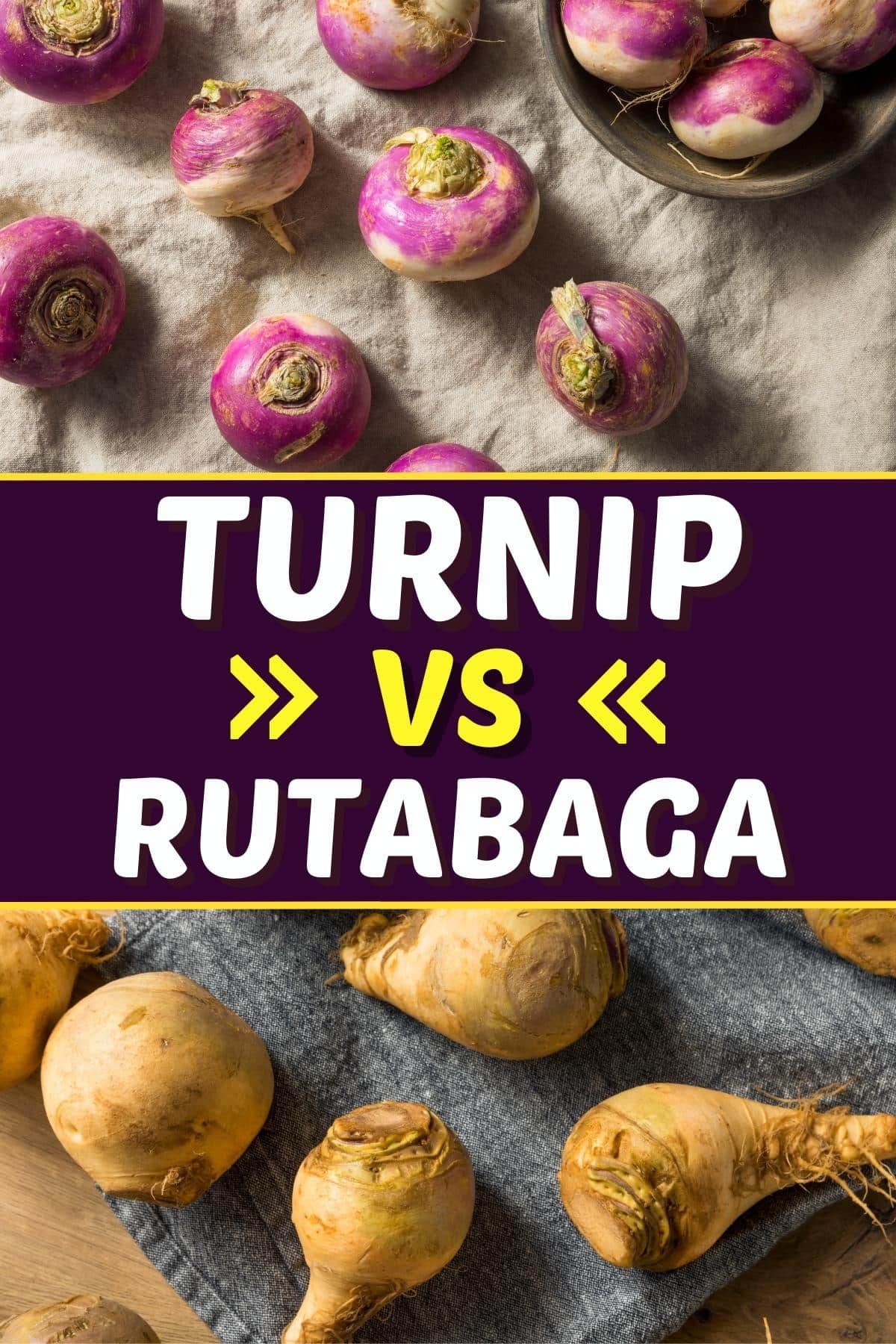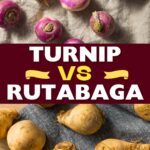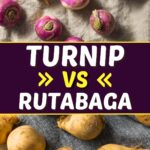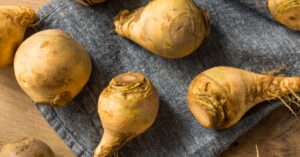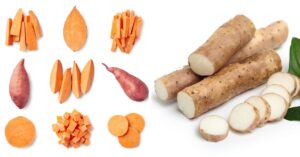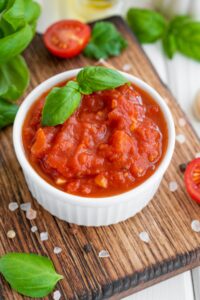As a lover of vegetables, I regularly contemplate which produce item reigns supreme. One such pondering is about turnip vs. rutabaga.
Is there really much difference between the two?
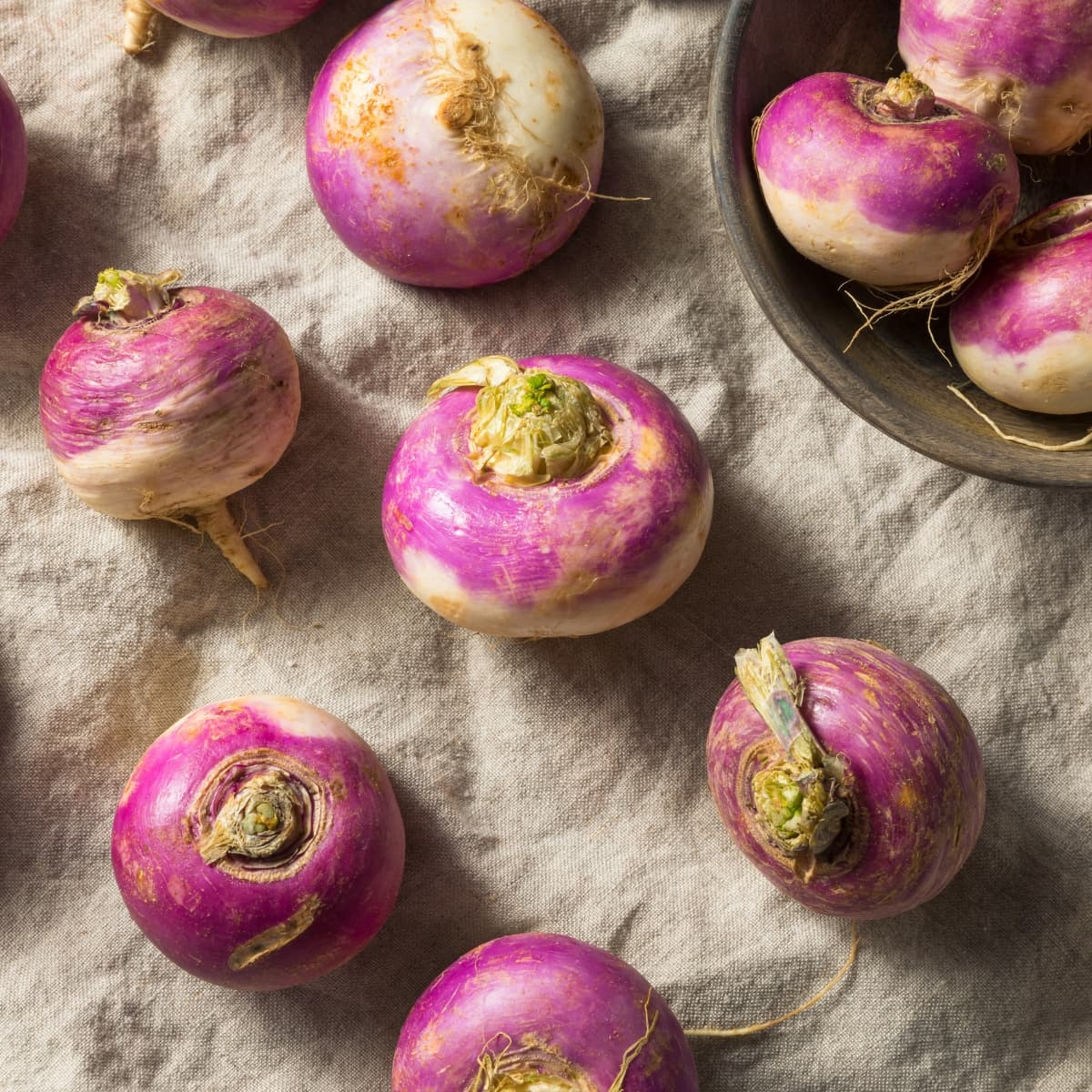
These two root vegetables may look similar, but their taste and texture can differ drastically.
Some swear by the slightly sweet and nutty flavor of rutabagas. Others prefer the earthy and mildly bitter taste of turnips.
Both have unique characteristics that make them stand out in their own way. So, come learn more about turnips and rutabagas!
Turnip vs. Rutabaga (What’s the Difference?)
Appearance
Turnip
- Turnips are small-ish, with a round or slightly flattened shape.
- The skin is white or pale yellow.
- Turnips often have a purplish crown where the taproot meets the top of the vegetable.
- The flesh can be white or pale yellow as well.
- The skin of turnips is usually smooth.
Rutabaga
- Rutabagas are larger than turnips and have a more elongated shape.
- They have rougher and thicker skin.
- The skin is tan, brown, or purplish in color.
- The flesh of rutabagas is usually yellow or pale orange.
Taste
Turnip
- Turnips have a mild and slightly peppery flavor.
- The younger turnips are sweeter and more tender.
- Older turnips can be a bit tougher and more sharp.
Rutabaga
- Rutabagas have a sweeter and earthier taste compared to turnips.
- They can sometimes have a mild cabbage-like flavor as well.
- Many think rutabagas have a richer and more complex taste than turnips.
Culinary Uses
Turnip
People commonly use turnips in a variety of delicious recipes.
- People enjoy them raw in salads for a crunchy texture and tangy taste.
- You can also roast, boil, steam, or mash turnips.
- Add them to soups, stews, and stir-fries for flavor and texture.
Rutabaga
Rutabagas are versatile vegetables often used in hearty and comforting recipes.
- They are ideal for soups, stews, and casseroles, where their sweet and nutty flavor shines.
- You can mash or roast rutabagas as well. This offers a unique twist on traditional mashed potatoes or roasted vegetables.

What Are Turnips?
Turnips are a type of root vegetable that belongs to the Brassicaceae family.
Turnips have been cultivated for centuries. People love them for their versatility and nutritional content.
They are a round or slightly flattened root, often with white or pale yellow skin.
Some varieties may have a purplish top near the stem.
Turnip leaves, known as greens, are also edible and have a slightly peppery flavor.
Besides being tasty and versatile, turnips are a good source of nutrients.
They provide dietary fiber, vitamins C and K, and minerals like potassium and folate.
Turnips are low in calories. So, they are a healthy option for adding texture, flavor, and nutrients to your meals.
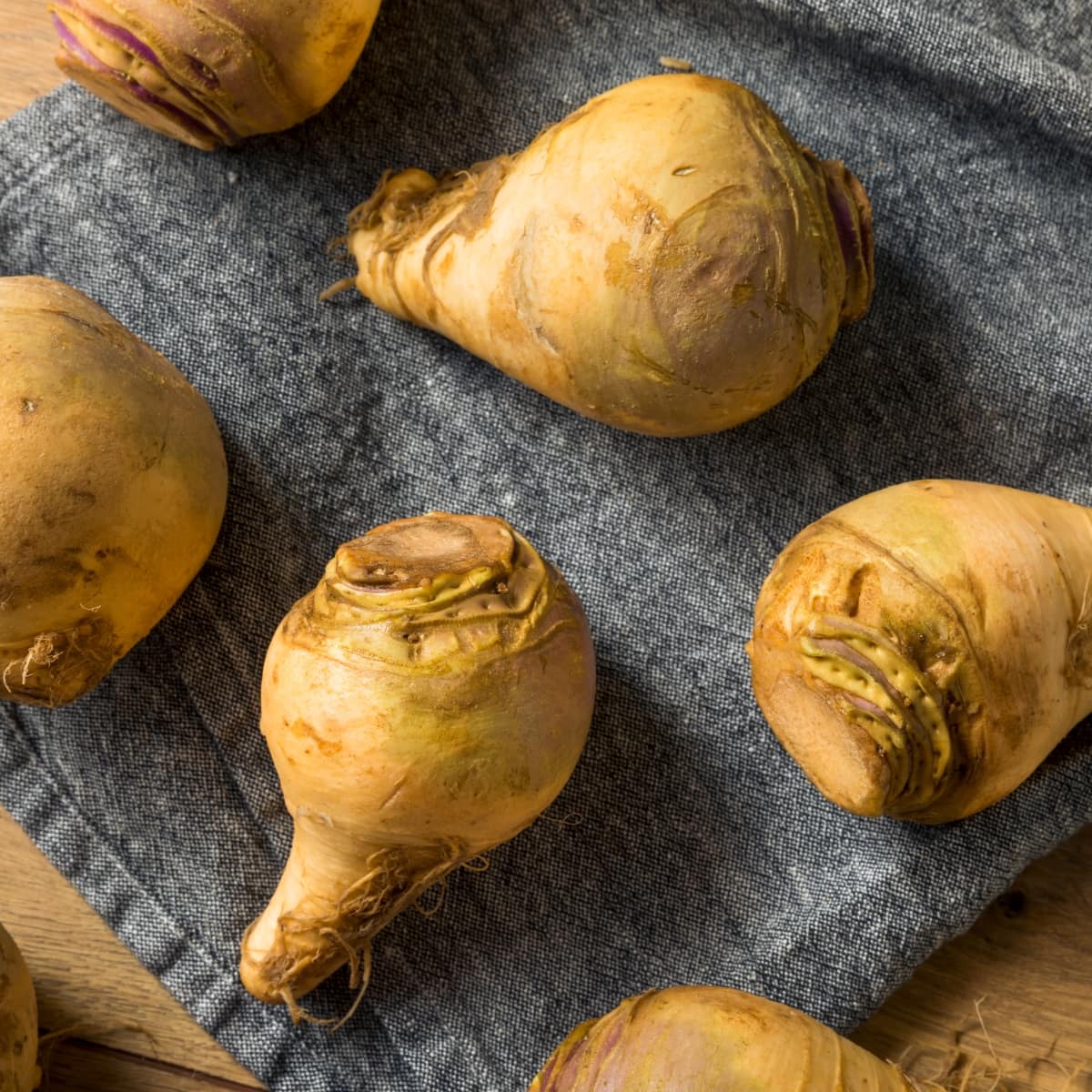
What Are Rutabagas?
Rutabagas are a root vegetable with a rich, mildly sweet flavor and buttery texture.
They have thick tan skin on the outside with yellow flesh on the inside.
A versatile ingredient, you can enjoy rutabagas raw, boiled, mashed, roasted, or pickled.
Rutabaga’s skin is edible and adds an extra flavor and texture component.
But you can choose to peel the vegetable. Use a vegetable peeler to remove the outer layer.
Then, cut it into cubes or slices, depending on how you want to cook it.
When selecting a rutabaga, look for one that is firm and heavy for its size.
How to Store Turnips & Rutabagas
- Remove Greens: If the turnips or rutabagas come with their greens attached, remove them before storing them.
- Cool and Dry: Find a cool, dry, and well-ventilated storage area. A basement or a cool corner of your kitchen is ideal. This prevents excess moisture buildup.
- Loose Storage: Place the turnips and rutabagas loosely in the storage area. Avoid tightly packing them to allow for proper airflow, which helps prevent moisture accumulation.
- Wrap or Sand: Wrap each turnip and rutabaga in paper towels. Alternatively, you can store them in a box filled with dry sand.
- These methods help maintain consistent moisture levels and prevent drying out.
- Avoid Airtight Containers: Do not store turnips and rutabagas in airtight plastic bags or containers. This can create excess moisture and hasten spoilage.
